- Administrator
- Albums and Singles
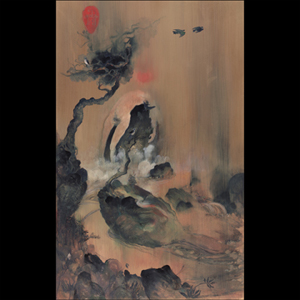 As only their second performance together, the first consisting of a collaborative live show, the duo of Leslie Low (The Observatory) and Lasse Marhaug (Norway's undisputed king of noise), this improvised performance combines two distinctly different approaches to music and sound, but the combination makes perfect sense and pairs together powerfully.
As only their second performance together, the first consisting of a collaborative live show, the duo of Leslie Low (The Observatory) and Lasse Marhaug (Norway's undisputed king of noise), this improvised performance combines two distinctly different approaches to music and sound, but the combination makes perfect sense and pairs together powerfully.
The paring alone makes for an odd proposition, with Low's looped and processed guitar and voice intonations resulting in rich, warm melodies and drones, while Marhaug's brittle, but expertly manipulated electronic noises covering two very different sonic spectrums.The resulting songs are made all the better with this clash of sounds, and actually do sound very song-like in their consistency and structure.
"Silver Needle, Silver Dragon" begins with Marhaug's overdriven, waxy noise passages skittering above a morose passage of melody, resulting in a dark but not oppressive sound.The noise making for an appropriate accompaniment to the dirgey tones, not a drastic shift or distraction that it could be."Each Bay Its Own Wind" has a similar structure, mixing ghostly guitars and sputtering, electronic pulses that become a bit more harsh and jumpy as the piece goes on.
Some of the performances seem to lean more into Marhaug's world of dissonance than Low's melodicism:"Fleas Were The Ancestors of Mankind" keeps with the chirpy noises, pushed into shrill and brittle realms, but never getting too raw or abrasive.The throbbing, low register notes and crunchy noises of "Eggs and Emptiness" also only hint at melody but instead make for more of a showcase of the harsher electronic noises.
Both "Let the Old Philosopher Use You" and "Elixir of Death" go a bit further out into space.The former mostly reduces the traditional instrumentation to ghostly winds, focusing instead on fragmented outbursts and some bizarrely organic, monstrous cries."Elixir of Death" keeps the guitar mostly unprocessed, but with a more bleak, almost metal tone to it.The electronics are wetter and nastier, and the whole thing takes on some oddly structured electroacoustic tone before falling apart into a world of sputtering noise.
I am more familiar with Lasse Marhaug's overall body of work, and here he once again shows his unparalleled brilliance in controlling harsh and ugly noises and shaping them into rich and complex compositions.His contributions here are distinctly him, but compliment Leslie Low's more refined, traditionally musical elements quite well, making for a stark, yet fitting contrast.What could come across as simply feedback mixed with someone else's musical tracks instead makes for a taut, conceptually fleshed out collaboration that is brilliantly moody and diverse in its sound and structure.
samples:
 
Read More
- Administrator
- Albums and Singles
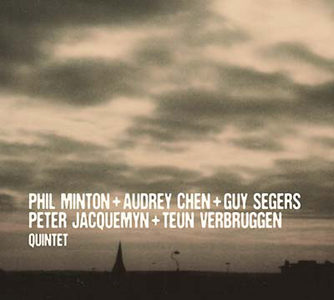 The fundamental elements of singing and vocalizing are easy to miss in most music. All singers, even the very worst, unconsciously coordinate the various processes required to sing musically, so that respiration, phonation, resonation, and articulation collapse into sung phrases or wordless melodies. Phil Minton and Audrey Chen work to undo that coordination. They break their voices down, emphasizing the dental clicks, nasal hums, and various fleshy noises typically masked by melodies and lyrics. Many of the sounds they produce as part of this quintet—which features two basses, percussion, and cello—are the kind most singers would try to play down. By giving them the spotlight, Phil and Audrey are forced to express themselves in the same way instruments do.
The fundamental elements of singing and vocalizing are easy to miss in most music. All singers, even the very worst, unconsciously coordinate the various processes required to sing musically, so that respiration, phonation, resonation, and articulation collapse into sung phrases or wordless melodies. Phil Minton and Audrey Chen work to undo that coordination. They break their voices down, emphasizing the dental clicks, nasal hums, and various fleshy noises typically masked by melodies and lyrics. Many of the sounds they produce as part of this quintet—which features two basses, percussion, and cello—are the kind most singers would try to play down. By giving them the spotlight, Phil and Audrey are forced to express themselves in the same way instruments do.
Four Instruments Two Voices is one of two Audrey Chen and Phil Minton albums released this year by Sub Rosa, both of which focus on extended vocal techniques. This one matches their voices with Guy Segers' electric bass, Peter Jacquemyn's double bass, and Teun Verbruggen's percussion. As might be expected from instrumentalists who have worked with the likes of Peter Brötzmann, John Butcher, and William Parker, the music is improvised and mostly chaotic. But because Chen and Minton's vocal contortions lead the group, and because there isn't another wind instrument around, much of the record has a loose and open feel. All the vocal frying and plosive noises they make with their mouths come through loud and clear, from the spit-filled vibrations of their lips to the raspy hiss of their closed windpipes.
Such physical noises make for tense music. When Chen and Minton choke sounds out, my body involuntarily seizes up, and their moans have a way of drawing my shoulders up against my neck. When the band reacts to them in sympathy, the effect is darkly atmospheric and unsettling, as on "Eight" and "Nine." But not everything is quite so serious. On "Three," Minton and Chen's gaseous vocalizations are paired with a squealing cello and a wobbly rhythm section that sounds absolutely lost. It's hard not to laugh at how ridiculous it all seems, and at times I think it sounds like the musical version of a slapstick comedy.
For "Six" their growls and wordless interjections are recast as part of a quiet drama filled with bird-like whistling, ominous bass melodies, and flitting percussive sounds. The band's muted performance fosters a calmer atmosphere, and Phil and Audrey both sound more subdued throughout, but it's hard to tell whether the band is responsible for controlling the mood or if they're following the vocalists' lead. Later in the album Segers plays several naked melodies, and I think those color the way I'm hearing the voices. Either way, though the techniques are unconventional "Six" is a relatively pretty song. It's a solid example of how extended vocal techniques can be used to produce musically pleasant and expressive results without relying on a singer's vocal quality or resorting to familiar melodic techniques.
In the liner notes Minton writes, "This music is first a matter of extra-lingustic expression, the idea of going beyond the word's meaning, an exploration that doesn't stop at letters... but extends to all in-between-sounds made possible by the tongue/oral cavity/breath configuration." I don't know if Phil or Audrey's performances go beyond words, but their fragmented noises and stripped down vocal utterances do get at feelings and expressions differently than conventional singing does. Rather than going beyond anything, I get the sense that they're digging down, drilling into the voice and looking for meaning and expressiveness where most would hear nonsense. Whatever the theoretical framework is, the content is unique and varied—the kind of music that encourages lateral thinking and hearing ostensibly familiar sounds anew.
 
samples:
 
Read More
- Administrator
- Albums and Singles
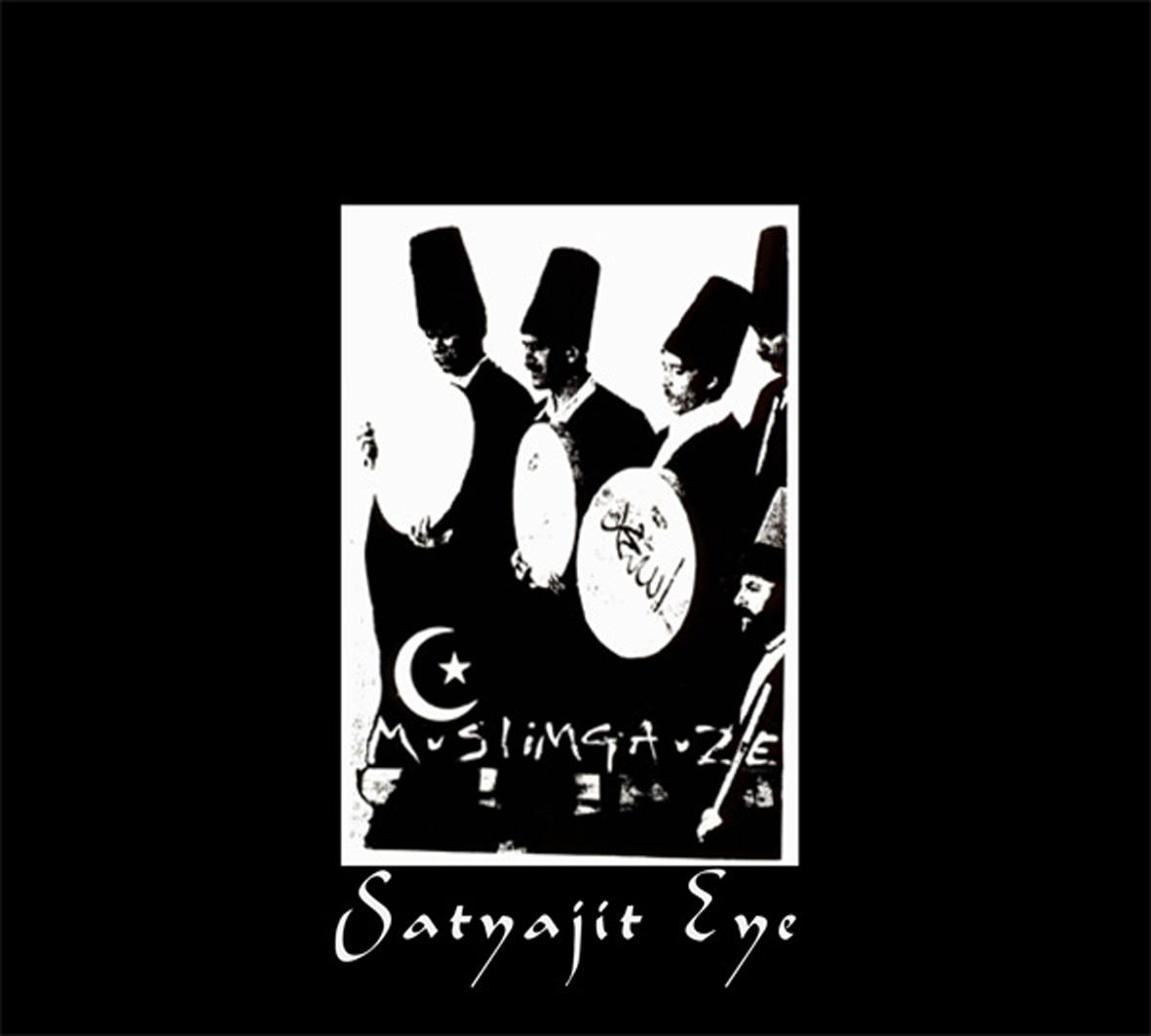 I have long felt that the best possible thing that could happen for Bryn Jones' legacy would be for someone to brutally pare down his out-of-control discography to just the essentials, but I am tragically powerless to stop the tide of fresh dispatches from his seemingly infinite backlog of unreleased material.  This latest pair of albums in Staalplaat's archive series are predictably a mixed bag, but the album of almost entirely unheard material (Al Jar Zia Audio) is dramatically better than the previously released (but hard-to-get) Satyajit Eye.  That is both tantalizing and exasperating, as it guarantees that there will be many more albums to come and that Muslimgauze fans will be sifting through them in (financially ruinous) search of scattered gems for years.
I have long felt that the best possible thing that could happen for Bryn Jones' legacy would be for someone to brutally pare down his out-of-control discography to just the essentials, but I am tragically powerless to stop the tide of fresh dispatches from his seemingly infinite backlog of unreleased material.  This latest pair of albums in Staalplaat's archive series are predictably a mixed bag, but the album of almost entirely unheard material (Al Jar Zia Audio) is dramatically better than the previously released (but hard-to-get) Satyajit Eye.  That is both tantalizing and exasperating, as it guarantees that there will be many more albums to come and that Muslimgauze fans will be sifting through them in (financially ruinous) search of scattered gems for years.
Satyajit Eye was originally released back in 1993, but under very bizarre circumstances: it was free, but it could only be obtained by cutting out part of the insert from Hamas Arc and mailing it to Staalplaat with a blank DAT.  Consequently, I sincerely doubt very many people ever got to hear it until very recently, when it finally surfaced as a bootleg.  That is presumably why Staalplaat is releasing this now, though I think they could have safely let this one slip through the cracks.  In theory, I like the idea of a secret, special album that is only available through symbolic sacrifice.  In reality, however, I intensely dislike the idea of defacing album art to get a dire collection of studio scraps in an annoying format, so I am glad I missed out the first time around (and again with the bootleg).
This "expanded" reissue (on CD, thankfully) is quite a bit different than the original release, but it is no less staggeringly inessential.  For one, roughly half of the album's more substantial pieces ("Zion Poison," "Taureg," and "Satyajit Eye") are already available in slightly different form on the better and much easier to procure Vote Hezbollah album.  Secondly, the three "new" tracks added to this reissue, all titled "Remix from Vote Hezbollah," are fairly ridiculous: they are all basically the same clattering percussion loop regurgitated in 5-minute, 9-minute, and 18-second variations (the duration being the only perceptible variation).  Finally, I am confounded as to why the opening "Amritsar" was shortened from 14:54 to 0:26.  I have not heard the original version, but the new, streamlined version is essentially a dull, artless snippet of someone speaking in Arabic (presumably).  I would have shortened it even further by completely deleting it from the album.
Aside from the unique circumstances of its release, the sole other noteworthy thing about Satyajit Eye is that it is apparently one of the first recorded instances of Jones' incorporation of Indian music.  While that is mildly interesting historically, there are plenty of more successful experiments in this direction on future releases and I would prefer to listen to them.  Otherwise, the lone justification for this album's existence seems to be the presence of "Dhobi" and "Caste," which do not seem to be available elsewhere, unless there are cannibalized versions lurking around under different names (not unlikely).  Both are admittedly likable, but both would be fairly forgettable pieces within the context of a "real" Muslimgauze album.  Ultimately, Satyajit Eye is not just for completists only–it is solely for only the most indiscriminate completists.

While Al Jar Zia Audio is not any kind of lost, career-defining masterpiece, it definitely sounds like one when compared to Satyajit Eye: from the very first seconds of "Ayatollah Dollar," this album seemed to explode from my speakers.  Part of that is due to the simple fact that Audio is mixed quite loudly, but it is also a very dense and vibrantly beat-driven affair from start to finish.  These are clearly songs that Bryn was keen to formally release at some point, as they sound very "finished," sculpted, and visceral.  That makes for a very fun and enjoyable album, as crafting inventive and unusual grooves is where Jones truly shined.
In fact, these 15 pieces made me amusingly think of Jones as a kind post-industrial, proto-Madlib, albeit one curiously obsessed with Middle Eastern politics and culture.  The significant difference, however, is that Madlib's Beat Konducta series wisely tends to limit his beat sketches to just one or two minutes, whereas Bryn had a definite tendency to sometimes overstay his welcome a bit.  Long durations suit Muslimgauze's darker, more dub-influenced pieces like "Najibi" (7:13) nicely, but some of the more hip-hop/breakbeat-themed pieces definitely feel like they are flogging one simple idea to death by the 4-minute mark.  That sounds worse than it is though: there are not many weak ideas here, its just that some strong ideas could have been better presented.  Of course, given that Jones has been deceased for more than a decade, it is hard to fault him much for failing to edit these songs more thoroughly than he did in preparation for this release.
Aside from an unwavering devotion to rhythm, there is not an especially strong theme holding these songs together.  That turns out not to be problematic at all though, as Al Jar Zia just feels like a fine singles collection rather than a thematically coherent whole.  In fact, this is a remarkably filler-free Muslimgauze effort: aside from the brief, abstract interlude of "All I Have is Sand," it is quite easy to imagine nearly all of these songs connecting with someone.  Given my somewhat dub-centric taste, I was especially fond of both the aforementioned "Najibi" and the weirdly clattering and insistent title piece.  My favorite moment of the album, however, is the brilliantly one-dimensional "Lost Iranian Tourist," which offers little more than a lurching, overloaded, and absolutely bludgeoning thump, which is all it needs to be spectacular.
The sole real flaw with Al Jar Zia Audio is that it is little more than a collection of cool beats.  Jones certainly enhances his grooves with all kinds of textural elements like snatches of dialogue, field recordings, and loops of sitars and other Eastern instrumentation, but there is no real development to be found anywhere.  Instead, these pieces all simply lock into their distinctly Muslimgauze-ian grooves and continue in that vein until Bryn decided to stop.  I am definitely used to that by now though and it seems like a reasonable concession to make in exchange for music this unique and propulsive.  Ultimately, this is a surprisingly strong and varied release that exceeds many of Jones' more formal, celebrated efforts.  Given its smorgasbord-like nature, it is probably unlikely to uniformly thrill anyone, but it is hard to imagine any seasoned Muslimgauze fans (or curious, aspiring ones) not finding at least a few songs worth getting excited about.
Samples:
 
Read More
- Creaig Dunton
- Albums and Singles
 Although dormant for a number of years, Paul Douglas has leapt back into activity on this brief, but effective 7" single. With heavy use of electronics and processing, these two pieces are shaped into fully fleshed out and complicated works that bear the mark of an expert.
Although dormant for a number of years, Paul Douglas has leapt back into activity on this brief, but effective 7" single. With heavy use of electronics and processing, these two pieces are shaped into fully fleshed out and complicated works that bear the mark of an expert.
"Willow" is heavy on the electronics right from the onset, building from looping, heavy electronics that edge just ever so slightly into the realm of dissonance.Even with that, the slight dissonance gives an engaging grime to the otherwise gentle flow of sound, mixing in textural sensations and just a bit of crunch.The overall performance is bathed in a nice, warm glow of static that does not obscure as much as strengthen the sound.
On the other side, "Morning," Douglas keeps mostly away from the noisier elements and instead works amongst a world of light, ambient sounds.Slowly gliding, string-like passages drift about, propelled along by a low-end swell that never gets out of control, but instead propels the piece to delicately float away into silence as it concludes.
Douglas' work here might not be redefining a genre or breaking any new ground in its over all sound or approach, but it is an example of electronic abstraction done extremely well, presented in a tight, yet fully realized package that keeps things compelling throughout.
Read More
- Administrator
- Albums and Singles
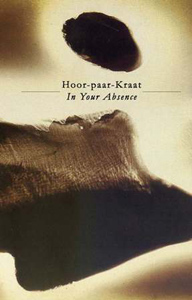 Anthony Mangicapra's Hoor-paar-Kraat project has always been rather prolific, but a recent spate of limited new releases has made this even more noticeable, but without any reduction in quality or distinction On these two tapes, he (and associates) balances both tense, carefully constructed pieces with shambolic, improvised sonic rituals.
Anthony Mangicapra's Hoor-paar-Kraat project has always been rather prolific, but a recent spate of limited new releases has made this even more noticeable, but without any reduction in quality or distinction On these two tapes, he (and associates) balances both tense, carefully constructed pieces with shambolic, improvised sonic rituals.
Robert & Leopold, Black Horizons
On "A Lanoo Alone" (from In Your Absence), he constructs a taut composition of carefully building shrill loops that evolves and develops as time wears on, slowly building momentum like a painfully slow descending elevator into Hell.When that more prominent, forceful sound drops away, it leaves behind a disquieting sense of ambience, with tight passages of feedback shimmering through atop urgent, but obscured undulations before stopping dead unexpectedly.
"I Would Have Made New Teeth for Him" (on Chorea) shows a similar sense of composition, meshing shrill, glassy bits of noise over a simple click rhythm that builds in complexity, building to a more traditional feeling as the feedback and dissonance is miraculously shaped into a more musical framework, coming together as some sort of esoteric, alien approach to traditional composition.

The backing half of each cassette sees Mangicapra going in a different direction, one of a looser, improvised nature rather than the complementing, more rigidly structured works."In Your Absence" puts field recordings with cavernous echoes and massive reverberation, the occasional ghostly apparition or creaking tape loop slipping through."Never Once Did He Complain" involves a wider array of players and sounds, mixing mangled piano and erratic pseudo-rhythms together into a shamanic ritualized jam session.The overall sensibility of the piece is consistent from beginning to end, but a flowing and endearingly sloppy structure.With the looseness and use of toy instruments, it conjures more of a warm, nostalgic feeling than a darker one than I would have expected.
Even with these tapes representing only a part of a recent batch of Mangicapra's work, it continues to stand out as fresh and unique, calling to mind the work of Nurse With Wound or irr. app. (ext.), but with his own sound and approach.His strength and skills at conjuring moods and images via sound is unparalleled, but also extremely complex.Rather than just relying on dark and mysterious, there are far more feelings and themes that arise from moment to moment on these two tapes.
Read More
- Administrator
- Albums and Singles
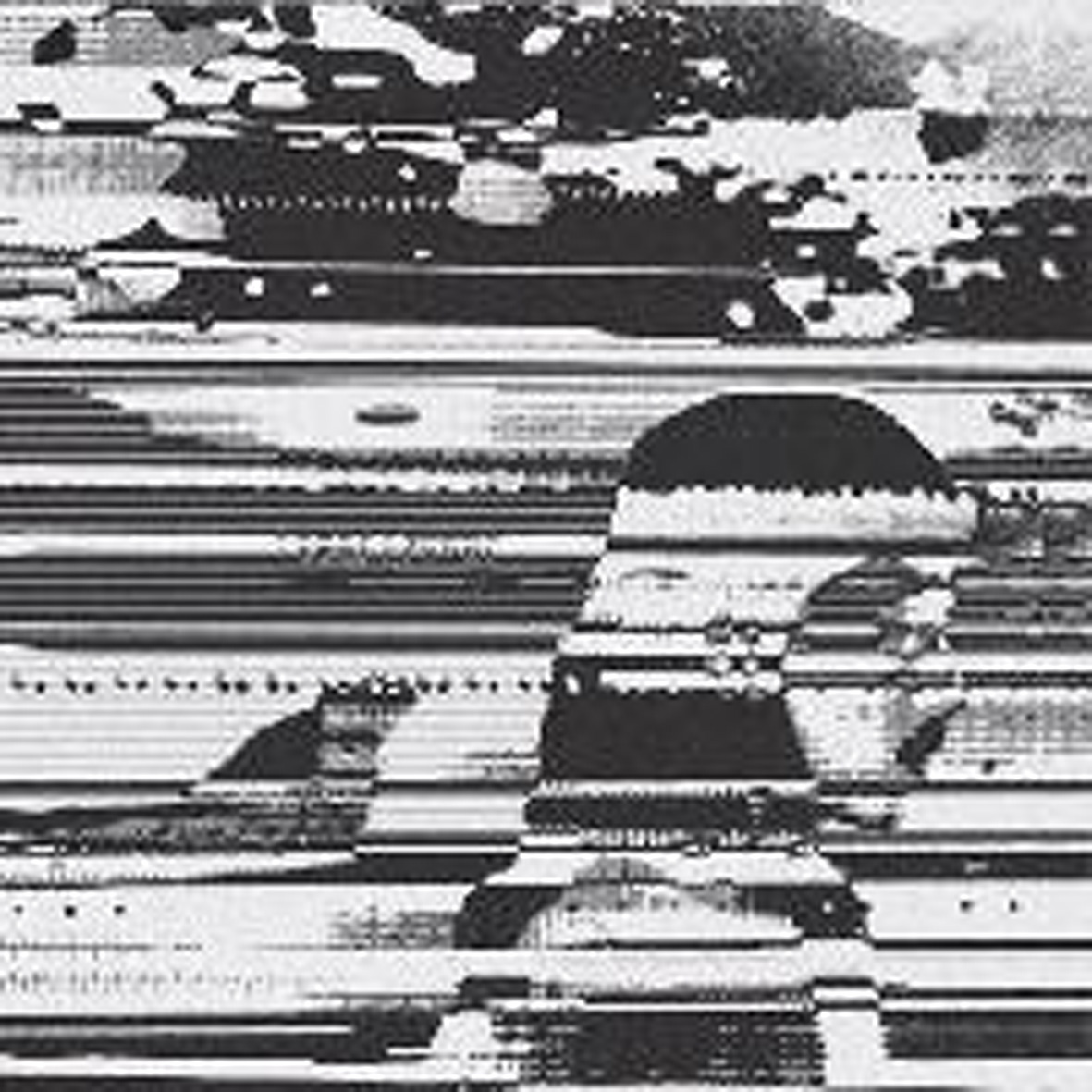 While I certainly would not complain if the endless tide of synthesizer albums were to suddenly stop completely, that does not mean that an occasional good one does not turn up every now and then.  This one, the solo debut from Jimy SeiTang (Rhyton/Psychic Ills) comes very close to being one of those albums, offering up a handful of thick, buzzing, and obsessively repeating soundscapes that sound like a mixture of John Carpenter and Krautrock.  Unfortunately, most of them either end too quickly or evolve too little to completely suck me in, but the closing piece reminded me very favorably of Popul Vuh's brilliant Aguirre soundtrack (minus all the hippy noodling), which is a high compliment indeed.
While I certainly would not complain if the endless tide of synthesizer albums were to suddenly stop completely, that does not mean that an occasional good one does not turn up every now and then.  This one, the solo debut from Jimy SeiTang (Rhyton/Psychic Ills) comes very close to being one of those albums, offering up a handful of thick, buzzing, and obsessively repeating soundscapes that sound like a mixture of John Carpenter and Krautrock.  Unfortunately, most of them either end too quickly or evolve too little to completely suck me in, but the closing piece reminded me very favorably of Popul Vuh's brilliant Aguirre soundtrack (minus all the hippy noodling), which is a high compliment indeed.
This release is a bit of a dramatic departure for SeiTang, as the bulk of his previous work has been very much in the free-form psych-rock vein: these six pieces could not possibly be less "rock," nor do they betray any clear improvisational origins.  Instead, SeiTang builds his songs from dense, throbbing, hypnotically repeating sequencer motifs with minimal added coloration.  Within those narrow constraints, however, Jimy covers fairly wide territory.  The driving, retro-futurist "Drift," for example, would not be at all out of place accompanying the opening credits of Escape From New York, while most of the other pieces are pastorally Kosmische-inspired in nature.  Jimy saves some surprises for the end of the album though, as he veers far away from his previous moods with the queasily dissonant "Athanor Ascension" and the aforementioned album highlight: the eerily melancholic ambiance of "Fade into Bolivian," which makes very effective use of artfully buried field recordings.
While that that aberrant, drone-based piece undeniably steals the show, it is probably the least distinctively "Stygian Stride" piece on the album (though Jimy's faux Carpenter excursion is a close second).  That is Stygian Stride's fundamental flaw: SeiTang is never able to fully capitalize upon what he does best, which is create very enjoyable and immense-sounding sequencer loops.  In that regard, "Taiga" is his greatest success, as its fat, insistently pulsing groove could have been the perfect foundation for an amazing long-form work.  Unfortunately, time and time again, Jimy seems content to just conjure up a great loop and allow it to repeat for several minutes with only the subtlest development before fading away.  As a result, this album is riddled with exasperating missed opportunities.  Or, more charitably, it is riddled with great promise.  At the very least, Stygian Stride still boasts one great piece, shows glimpses of vision, and sounds absolutely wonderful, but SeiTang definitely needs to go a bit deeper if he wants to create something truly substantial.
 
Read More
- Administrator
- Albums and Singles
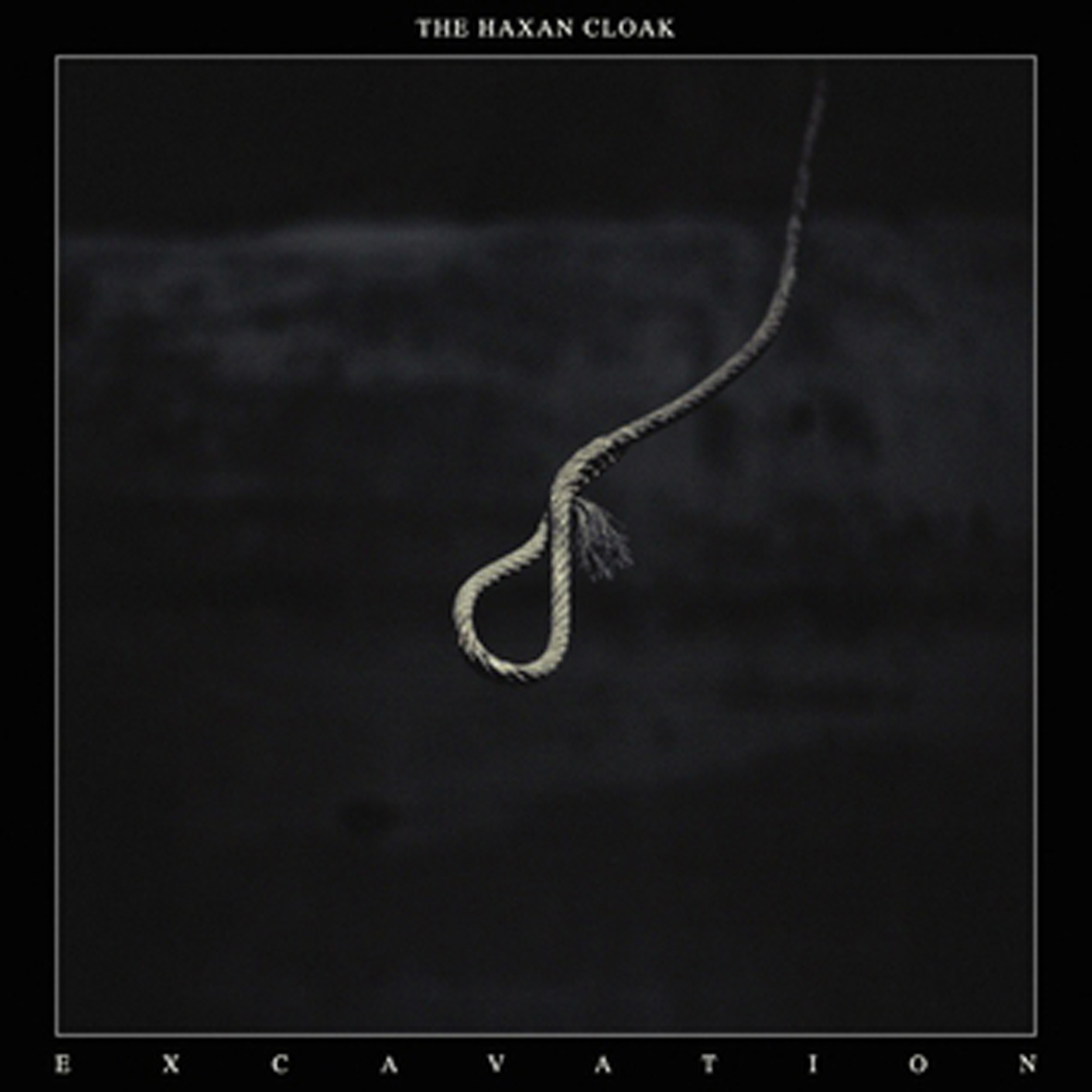 To this day, I am utterly baffled as to how The Haxan Cloak managed to become relatively popular at all–it all seems suspiciously Faustian.  Granted, Brian Krlic's profile has certainly benefited from his getting lumped in with the Raime/Demdike Stare pantheon of glacial, black-hearted "dance" artists, but his debut album was still essentially a collection of bleakly dissonant string dirges inspired by death, something that does not generally offer much in the way of mass appeal (or individual appeal for me, for that matter).  Excavation, however, is intermittently amazing, as Krlic's incredible evolution and inspired addition of deep sub-bass have transformed his previously oppressively sad vision into quite a heavy and frightening one.
To this day, I am utterly baffled as to how The Haxan Cloak managed to become relatively popular at all–it all seems suspiciously Faustian.  Granted, Brian Krlic's profile has certainly benefited from his getting lumped in with the Raime/Demdike Stare pantheon of glacial, black-hearted "dance" artists, but his debut album was still essentially a collection of bleakly dissonant string dirges inspired by death, something that does not generally offer much in the way of mass appeal (or individual appeal for me, for that matter).  Excavation, however, is intermittently amazing, as Krlic's incredible evolution and inspired addition of deep sub-bass have transformed his previously oppressively sad vision into quite a heavy and frightening one.
While I did not have especially high expectations going into this album, the first minute of opener "Consumed" was so crushingly awesome that I had to immediately start the song over to hear it again.  At under two minutes, "Consumed" is little more than an introduction, but its transition from ominous, gloomy thrum to massive, evil sub-bass is one of the heaviest things I have ever heard: it sounds like a slow-motion earthquake tearing the ground apart to loose some long-buried and forgotten horror upon the world.  Needless to say, that makes for a tough act to follow, but Krlic gamely does his best, as the remainder of Excavation sounds like a fully formed and gloriously ruined aural dystopia, roiling with nightmarishly decayed, warped, slowed, and pitch-shifted motifs galore.  All of which is right up my alley, of course.
Aside from the atypically warm closing piece ("The Drop"), Krlic does not bother much with melody at all, nor does he bring back much of the organic instrumentation that was so integral to his past work.  In most cases, that would be a step backwards, but Brian succeeds so beautifully at texture, mood, and pulse that Excavation somehow thrives in their absence: most of the elements that I would normally want in a song just simply do not belong here.
In fact, space, emptiness, and a total lack of graspable melody are absolutely integral to maintaining this suite's mystique and looming sense of dread.  Most of Excavation sounds like a dubstep party in hell (ideal location) that is only audible through weirdly time-stretched, muted, and hallucinatory snatches.  While the throbbing, subterranean bass is relatively omnipresent, virtually every other element sounds like it is fighting to break through a barrier of some kind, which is an impressive production feat.  It is not easy to sound simultaneously massive and visceral and spectrally detached, but the best moments of Excavation deliver exactly that.
My sole critique is that Brian's compositional talents are not quite on the same level as his impressive abilities in all other respects.  For example, aside from the bookends, there are not many characteristics that distinguish these pieces from one another.  Also, taken on a song-by-song basis, a few pieces seem overlong or one-dimensional.  Given the nature of the material, however (haunted ambiance and sustained simmering horror), such shortcomings are not nearly as significant as they might be otherwise.  They are definitely enough to prevent Excavation from being a full-on masterpiece, but not enough to stop it from being a great album that definitively catapults Krlic into the upper echelon of dance music's shadowy underground.
 
Read More
- Administrator
- Albums and Singles
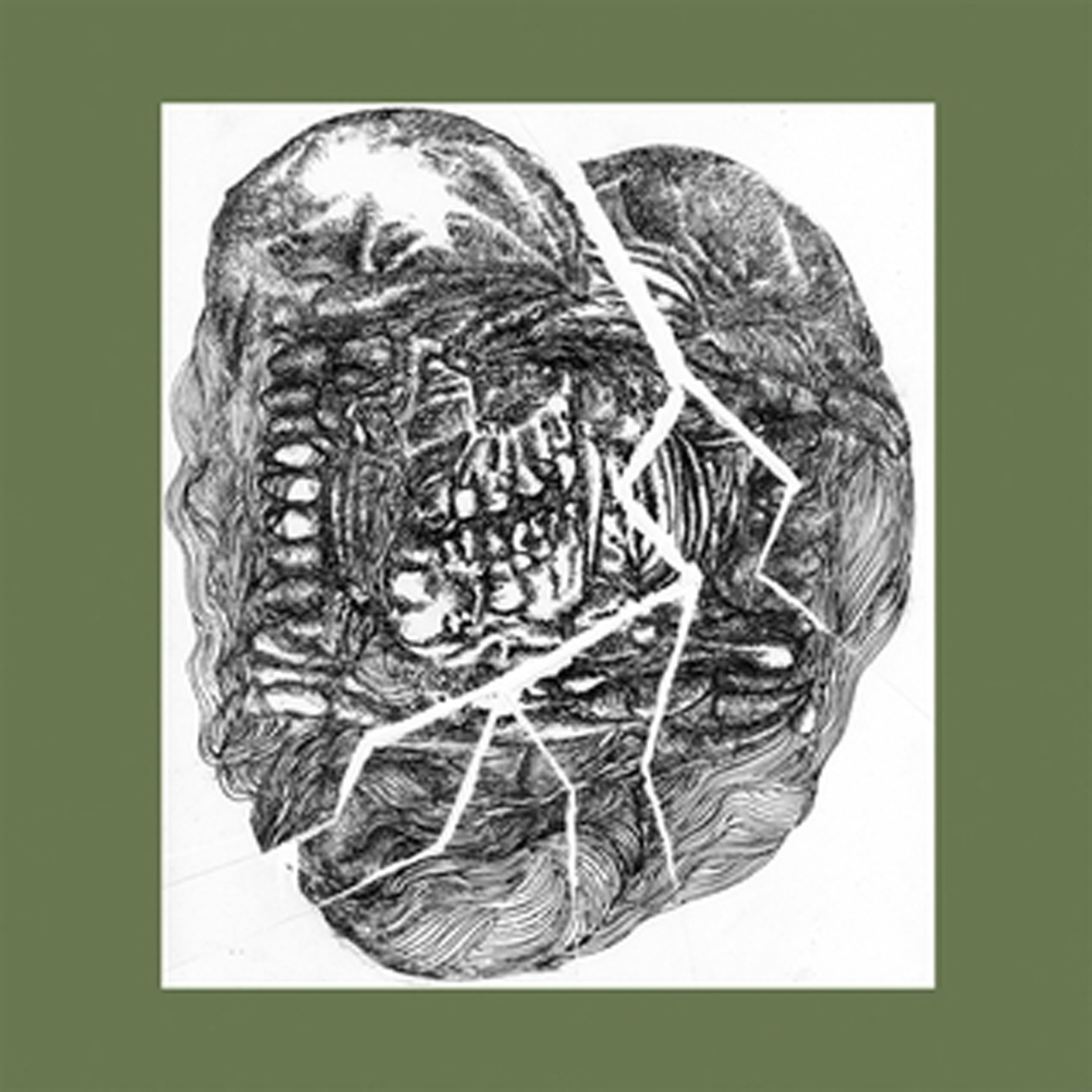 I have not been paying much attention to Wolf Eyes for the last several years, but I was inclined to give this album a chance after repeatedly hearing all about how it is both a bold change of direction and a major statement on the state of noise in 2013.  After listening to it a few times, I guess it is arguably both, but it is definitely not some kind of epoch-defining revelation, nor is it a particularly great album (though it certainly has some great moments).  Rather it is merely an uneven, intermittently inspired effort that displays a new penchant for ruined-sounding ultra-minimalism, but offers only a few fully realized, successful examples of it amidst too much filler.
I have not been paying much attention to Wolf Eyes for the last several years, but I was inclined to give this album a chance after repeatedly hearing all about how it is both a bold change of direction and a major statement on the state of noise in 2013.  After listening to it a few times, I guess it is arguably both, but it is definitely not some kind of epoch-defining revelation, nor is it a particularly great album (though it certainly has some great moments).  Rather it is merely an uneven, intermittently inspired effort that displays a new penchant for ruined-sounding ultra-minimalism, but offers only a few fully realized, successful examples of it amidst too much filler.
I have to hand it to Wolf Eyes: they certainly subverted my expectations a bit with the opening "Choking Flies," as I expected the future of noise to sound a hell of a lot noisier, or at least more ferocious.  Instead, "Flies" sounds a lot like decayed and deconstructed rock that has been stripped to its barest skeleton, then uglified.  More specifically, it sounds like Nate Young remixed a Girls Against Boys album by removing the guitars, then left the tapes out in the sun to melt together with a Throbbing Gristle album. As dubious as that may sound, the result is still distinctly, wonderfully "Wolf Eyes," as the ugly throbbing bass swells, out-of-sync dual-tracked vocals, hollow thump, clattering electronics, and ugly drifting notes combine to form a masterfully wrong and ill-intentioned whole.  If that momentum had sustained, No Answer: Lower Floors could have been quite a stellar album.
Unfortunately, it did not, as the remaining five songs are a mixed bag both stylistically and quality-wise.  "Born Liar," for example, is a thudding guitar and horn squall that sounds like it could have been made up and recorded on the spot.  That is followed by a very brief interlude of mangled speech and bleeping ("No Answer"), then a piece ("Chattering Lead") that is essentially a meandering, less successful variation on the "Choking Flies" formula, all of which illustrates what is so exasperating about this album: the first two-thirds are over before I even realize what happened and the only truly significant piece is the first one.
Thankfully, the trio get things back on track again with the epic "Confessions of the Informer," which is both the album's most aggressively minimal piece and its clear highlight.  It is built upon a little more than a slow-motion, repeating throb and stuttering snatches of vocals, coupled with queasy squeals from John Olsen self-made horns and guitar feedback from new member James Baljo...and that is about it.  That proves to be more than enough though–while not much overt evolution occurs over the course of its 12 minutes, it is so mesmerizingly ravaged, limping, and haunted that it could have gone on for twice as long and still been just as great (or better).  I suspect it sounds a lot like wandering nervously through a ruined space station must feel: alone and paranoid in an endless corridor of jagged metal, flickering lights, and eerie creaks and moans.  That is a great niche to stake out.
Naturally, after having delivered something so wonderful, the band felt that the only proper way to close the album was to give their ugliest, most contrarian impulses free-reign, as "Warning Sign" basically feels like a 7-minute locked-groove of grinding, unlistenable, air-raid-siren-style pain.  I suppose that is both amusing and fitting, but another good song would have been nice too.  As it stands, I guess I will have to settle for just two great songs and four not-so-great ones, which probably eliminates this as a strong contender for noise album of the year (even if "Confessions" is admittedly brilliant).  Of course, delivering a perfectly sequenced, uniformly great statement of intent would run counter to Wolf Eyes' whole messy aesthetic of spontaneity, entropy, and primitivism, so I cannot complain much–I knew very much what I was getting into and I got it.  I am very pleased to see that Wolf Eyes are just as capable of greatness and innovation as ever, even if their more frustrating characteristics remain just as evident.
 
Read More
- Administrator
- Albums and Singles
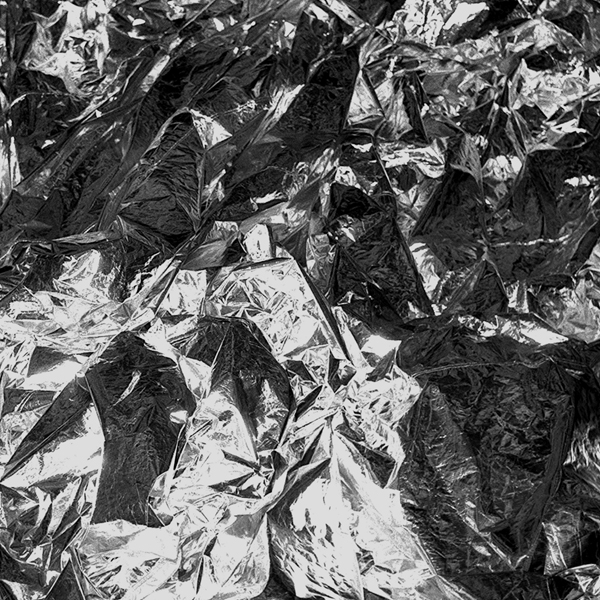 Barn Owl's penchant for subdued guitar music has always been a reliable standard for me. Lost In The Glare and Ancestral Star were easy to dissect, but welcoming and pleasantly sparse with a primal aesthetic that worked as an easy entry point into drone. In contrast, V is a totally different creation. Drawing inspiration from dub and dark ambient music, V is a fresh achievement for Jon Porras and Evan Caminiti, shifting tone artfully and refining their style. It superbly bridges a gap between two common but oddly disconnected subgroups of music.
Barn Owl's penchant for subdued guitar music has always been a reliable standard for me. Lost In The Glare and Ancestral Star were easy to dissect, but welcoming and pleasantly sparse with a primal aesthetic that worked as an easy entry point into drone. In contrast, V is a totally different creation. Drawing inspiration from dub and dark ambient music, V is a fresh achievement for Jon Porras and Evan Caminiti, shifting tone artfully and refining their style. It superbly bridges a gap between two common but oddly disconnected subgroups of music.
The album opens with "Void Redux," one minor miracle among several in the album. By using the kind of funereal ambiance in conjunction with their own brand of haunted drone, it immediately made it clear that this was a new kind of Barn Owl. If past albums were like surveying a desert landscape and coming across an ancient pyramid, V is the moment they actually enter the tomb. "The Long Shadow" borrows influence from shoegaze and pours drapes of noise over a guitar melody that in the past would probably be left to linger. Similarly, in "Blood Echo," I can hear guitar notes but never clearly; they're wrestling with layers of synth and warped percussion and failing slowly, being constantly consumed by some bigger and more menacing source. "The Opulent Decline," the album's seventeen minute grand finale, is practically an interring of Barn Owl's own style, serving as a fantastic corrosion of noise and harmony that caterwauls along, never quite peaking and never really slowing down. Each song is driven by that same restlessness, begging for replay once its brief time is up.
It is important to note that this is still very much a Barn Owl album and most people who are not well-acquainted with the group probably won't view these changes as dramatically as I have described them. There is a clear augmenting of their core sound with different timbres (synthesizers) and the slightest touches of dub techno and sampled percussion. Apart from that, it's still a duo making mournful guitar drone at heart. But to keep an aesthetic in check while reconstructing how to use the instruments they have takes a lot of skill. To do it so comprehensively is what makes this such a pleasant surprise.
Barn Owl albums have, in the past, always struck me as partially mired in some ideas that never quite clicked. That's not to say I don't love their past work, but I always got an odd sense of asymmetry about it. From guitar effects to the eastern-influenced sonics on each piece, it was all very isolated. Whether that was an intentional experience or a form that the group fell into, I can't say; part of me feels that drone with a heavy emphasis on guitar always engenders a theme of "loneliness." But V captures that feeling wholly, and adds a few details that fill gaps I didn't think to acknowledge. The result is something greater than the sum of its parts.
samples:
 
Read More
- Administrator
- Albums and Singles

Intervalo is the result of a collaboration between Seattle pianist Kelly Wyse and Vancouver's loscil. Culminating from two live performances in 2012, first at Seattle's Substrata Festival and later at Decibel Festival, these recordings were made in Seattle to capture the collaboration. This collection features reworked versions of familiar loscil compositions such as "Endless Falls" and "Hastings Sunrise" alongside unique versions of rarer compositions such as "Rye Fields" and "City Hospital."
More information is available here.
Read More
- Administrator
- Albums and Singles
 A massive ensemble of New Mexico-based artists, DCS features no less than ten bassists amongst other multi-instrumentalists. At first blush I expected an unidentifiable cacophony of noise, which would not necessarily be a bad thing, but this self titled album is much more varied and open than I believed it would be. Across three long and distinct pieces, there is much dissonance, but also subtlety to be heard.
A massive ensemble of New Mexico-based artists, DCS features no less than ten bassists amongst other multi-instrumentalists. At first blush I expected an unidentifiable cacophony of noise, which would not necessarily be a bad thing, but this self titled album is much more varied and open than I believed it would be. Across three long and distinct pieces, there is much dissonance, but also subtlety to be heard.
"I Wish They Could All Be Jemez Pueblo Gurlsss" (despite the morose project name, there is obviously humor here), is what most resembles what I expected from the line up.Initially waves of noise that blow across like desert winds, the resonating bass strings making themselves known.The orchestra of low end rumbles open wide up, surging in and out not necessarily in unison, but making their own idiosyncratic rhythms.
Jagged cymbals cut in leading into a marching band drum throb, volume levels pushed into overdrive and adding an extra layer of dissonance.It becomes a pleasantly messy, ramshackle combination of drums and feedback that locks into a rhythm, but then is allowed to float around on its own inertia.It makes for a structurally simple composition, but its monolithic brutality is what shines.
The second composition, "The Ballad of Sandoval County," is significantly different.Also leading off with a slow spaciousness, complete with distant wind chimes and muffled ambience, there begins an emphasis on amplifier noise and tightly clipped strings.The build is slow and deliberate, with the first ten minutes being surprisingly arid for such a sprawling project.Even when bowed strings and a more traditionally musical twang appear, it is only briefly before it hides again.
The shorter (as in ten minute) "Beso De Ese" embraces noise rather than space and ambience.Sputtering, scratchy distortion and amplifier detritus come together in a morass of sound, without any sort of instrumentation being identifiable.Overall it is more disjointed and loose.Feedback swells are cut and shaped to resemble rhythms before everything blows up in an overdriven wall of power electronics noise.
As a whole, this album is an oddity to say the least; with such a large ensemble making music that is more nuanced than abusive, and more inviting than abrasive.When everyone decides to let loose and explode sonically, it is a satisfying, bombastic mess.When things call for a lighter touch, the dry, oppressive heat of the desert is conjured beautifully via wonderfully indistinct sounds and passages.
samples:
 
Read More

